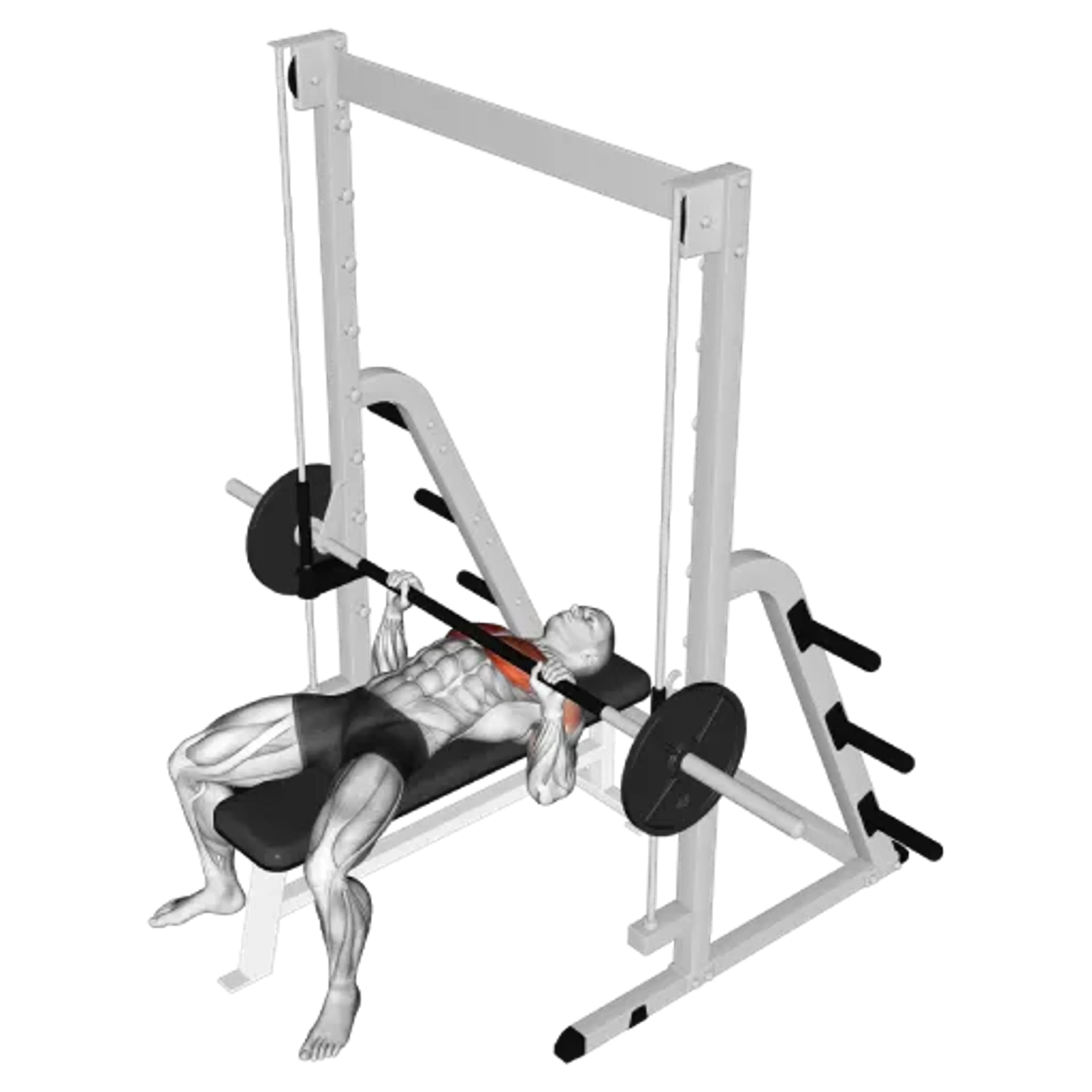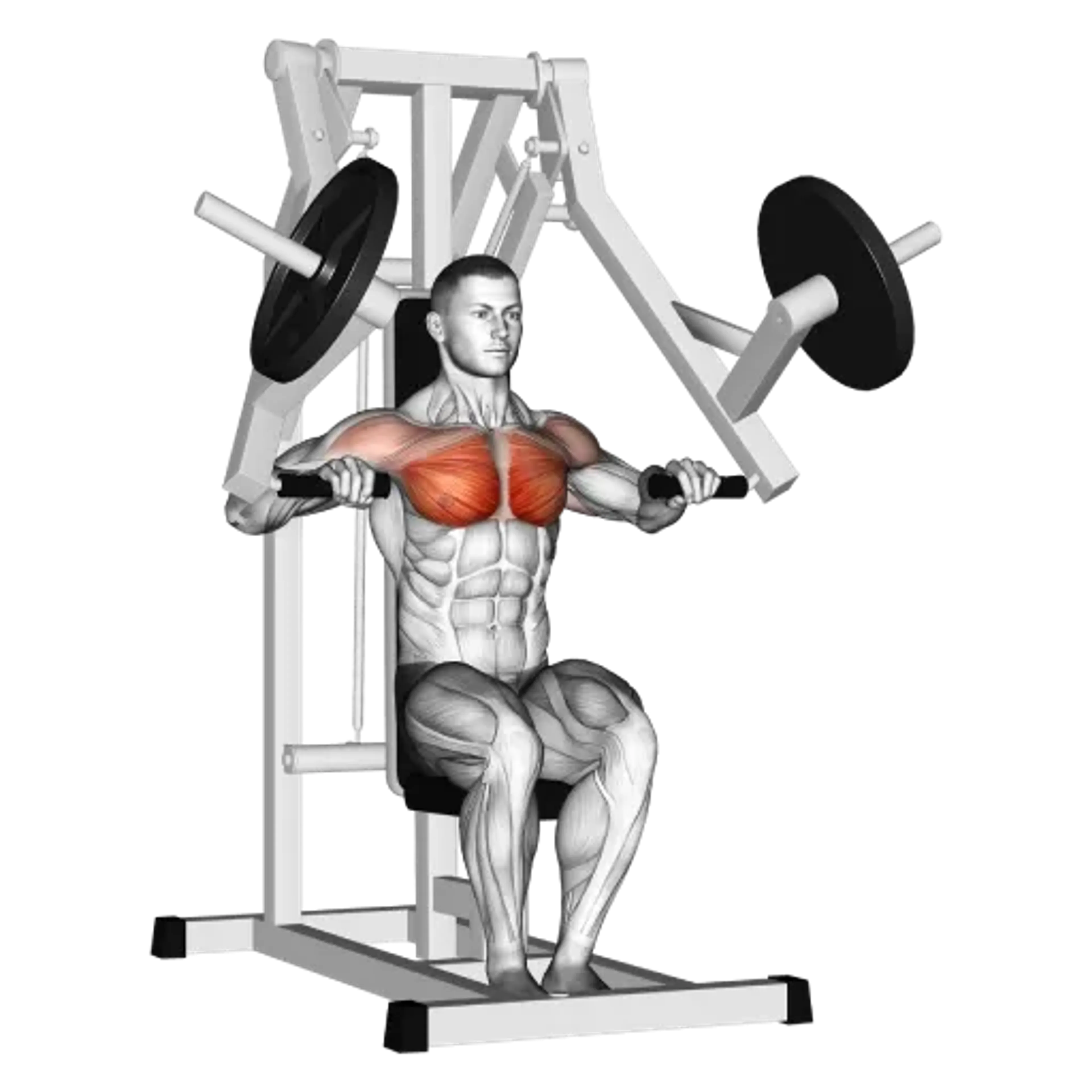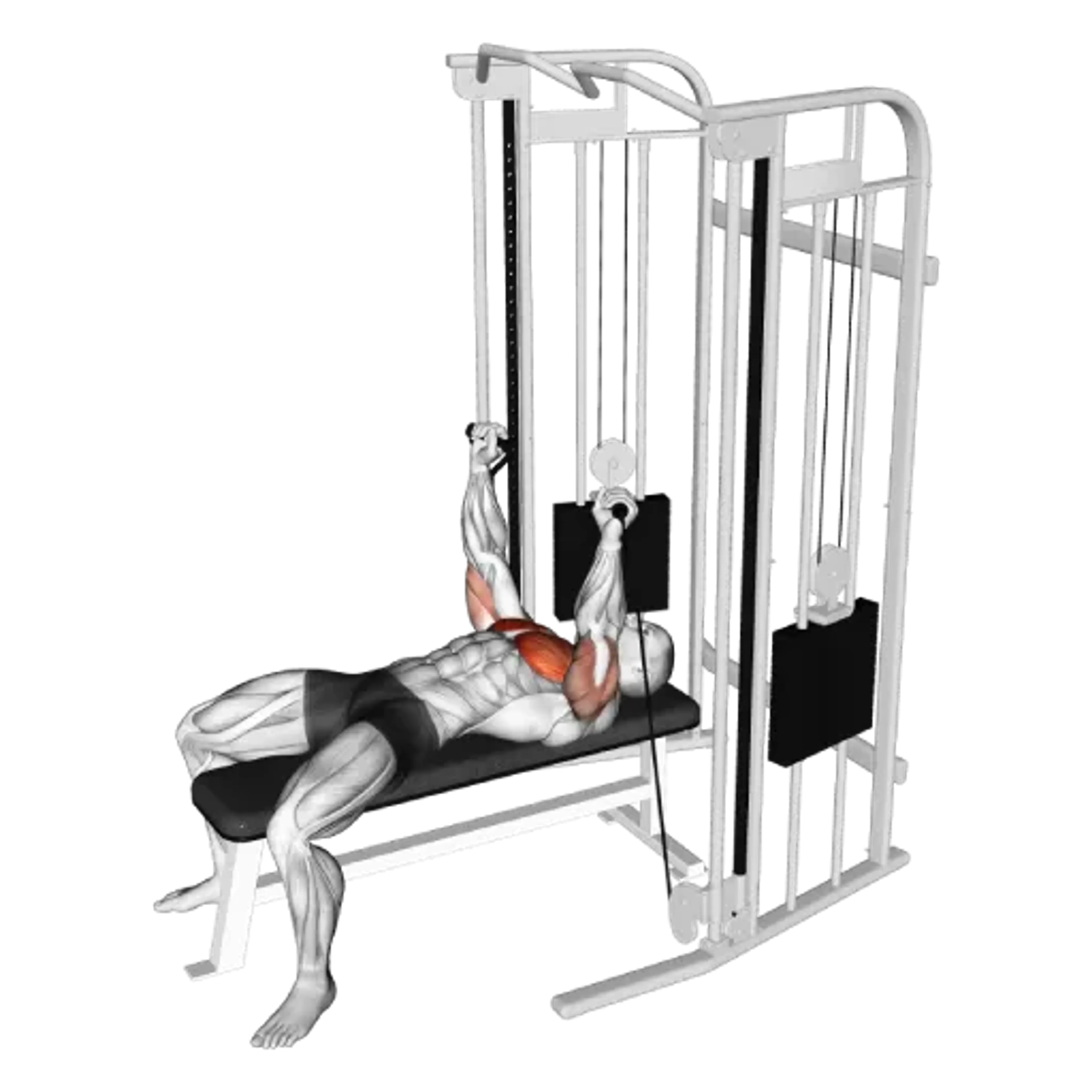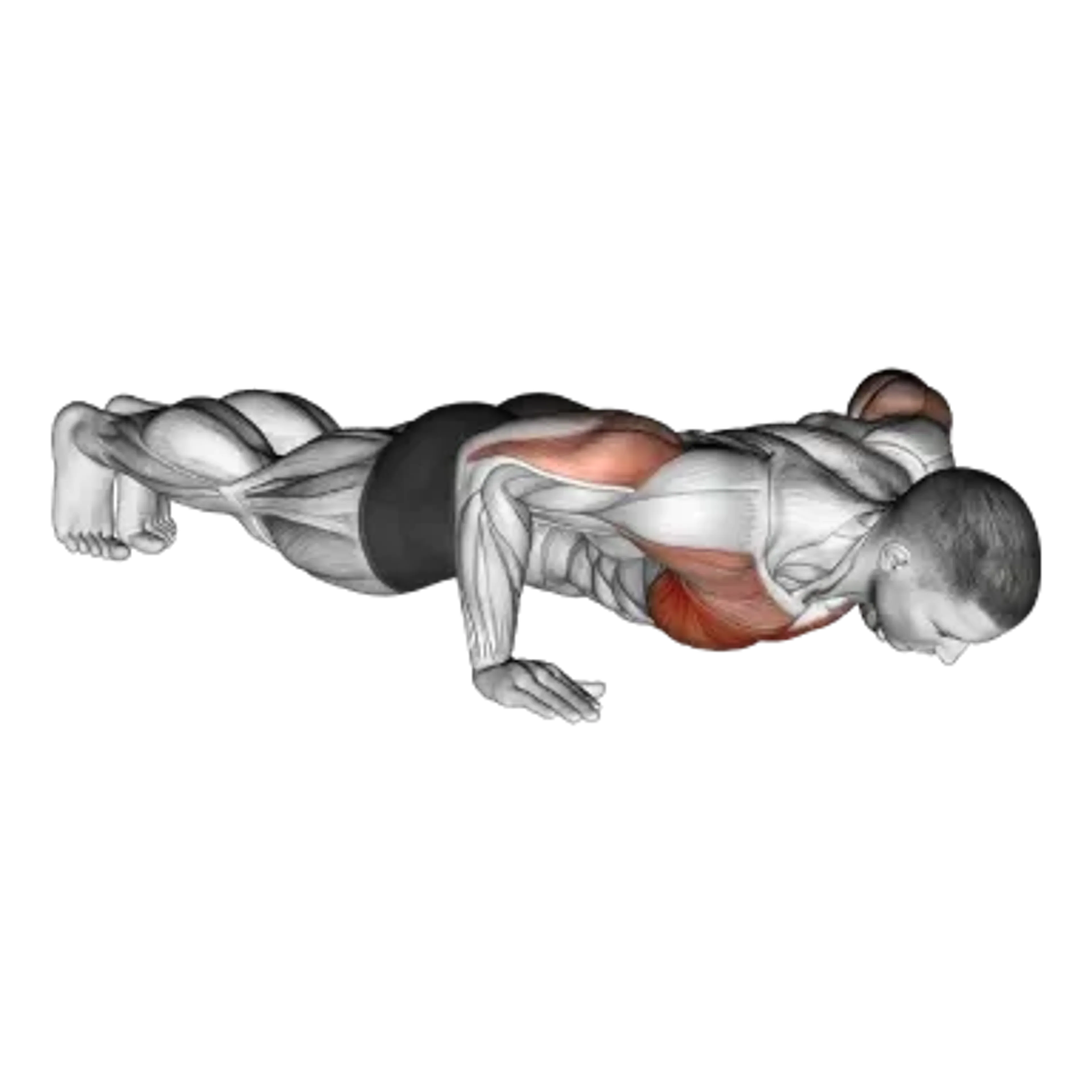Dumbbell Hammer Bench Press

Overview
- Primary Focus:
- Chest.
- Equipment:
- Dumbbell and bench.
- Difficulty:
- Beginner.
General Information
Dumbbell Hammer Bench Press is a compound exercise that primarily targets the chest and also engages the triceps and front shoulders. It is a beginner-level movement using a neutral grip to reduce shoulder rotation demands and promote stable, wrist-friendly pressing mechanics.
The neutral grip encourages elbow tracking close to the torso and can enhance comfort for lifters sensitive to standard pronated grips. It works well for hypertrophy and for building balanced pressing strength in home or gym settings.
Use controlled reps with even dumbbell paths and a light pause to improve stability. It can be programmed as a main press for novices or as an accessory to barbell benching for more experienced lifters.
Muscles Worked
- Pectoralis Major
- Primary
- Triceps Brachii (Long Head)
- High
- Deltoid
- Medium
- Triceps Brachii (Lateral Head)
- Medium
- Triceps Brachii (Medial Head)
- Medium
- Serratus Anterior
- Low
Instructions
- Set up on a flat bench with feet planted, shoulder blades set, and dumbbells resting on the thighs in a neutral grip position.
- Kick the dumbbells up to the start with wrists stacked over elbows and palms facing each other over the chest line.
- Lower both bells under control with elbows tracking about 30 to 45 degrees from the torso, keeping forearms vertical at the bottom position.
- Lightly touch or pause at chest level without losing upper back tightness or neutral wrist alignment.
- Press up by extending the elbows and driving the dumbbells along the same path, finishing with shoulders packed and ribs down.
- Lower the dumbbells to the thighs and then the floor safely after completing the set to avoid awkward dismounts from the bench.
Common Mistakes
Injuries
Dumbbell Hammer Bench Press is a low risk exercise when performed with proper technique.
Keep wrists neutral, elbows close, and move through a pain free range. Choose loads that allow symmetrical paths and do not force depth beyond shoulder comfort.
If discomfort occurs, reduce range, slow the tempo, or switch to lighter dumbbells. Stop the set if shoulder pain, radiating symptoms, or loss of control develops.
Alternative Exercises
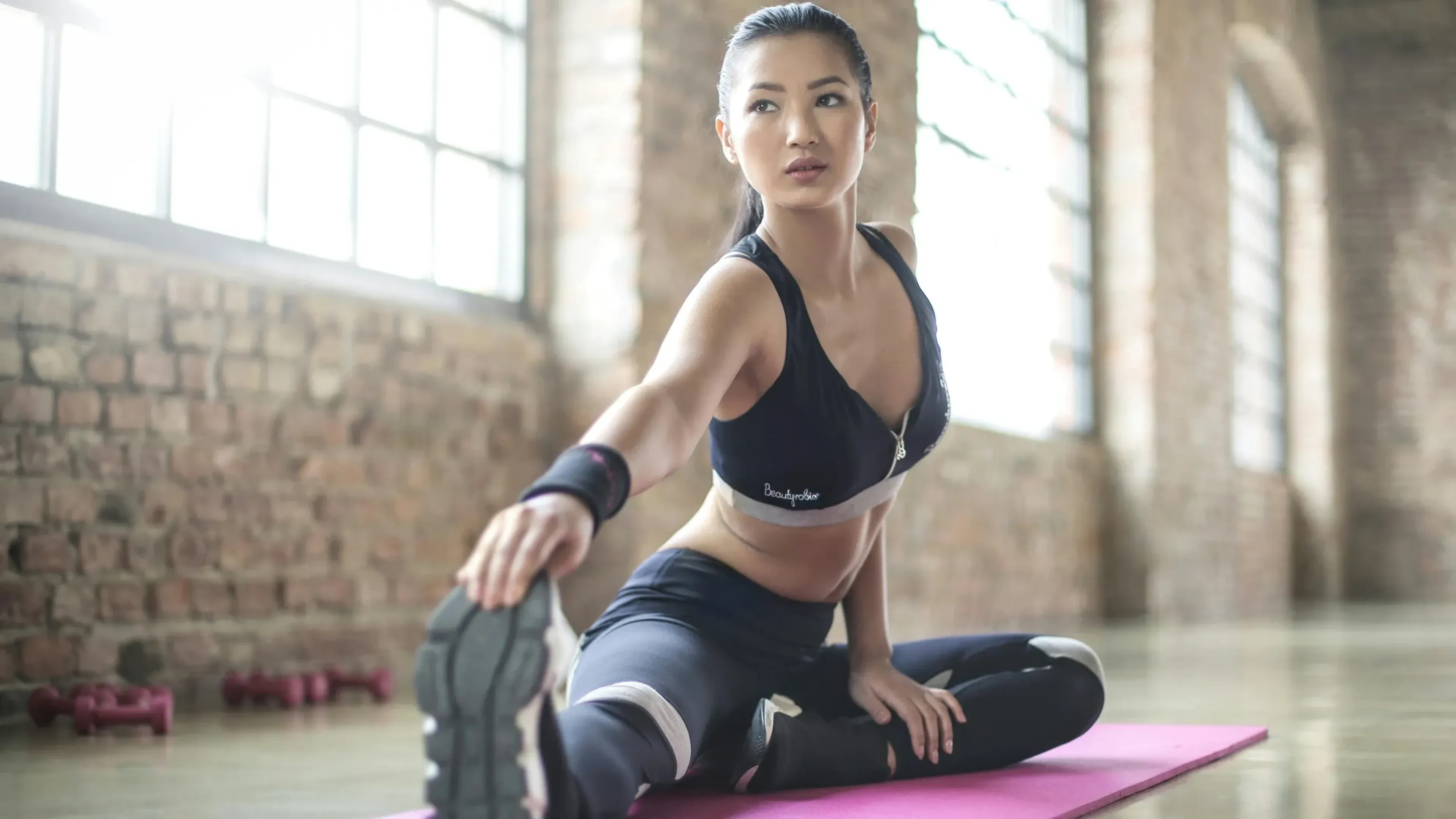
Frequently Asked Questions
- Q: Who benefits from the neutral grip?
Lifters with shoulder sensitivity to pronated grips or those seeking wrist comfort often prefer the neutral position while still training the chest effectively.
- Q: Should I touch the dumbbells together at the top?
You can finish with the bells close over the midline, but avoid clanking or drifting forward. Keep tension and alignment over the chest, not the face.
- Q: Is this good for beginners?
Yes. The neutral grip is intuitive and often more stable for learning pressing mechanics while keeping shoulder rotation demands moderate.
- Q: How should I progress load?
Increase weights gradually while maintaining smooth paths and pain free ranges. Add reps first, then small load jumps when tempo stays consistent.
Overview
- Primary Focus:
- Chest.
- Equipment:
- Dumbbell and bench.
- Difficulty:
- Beginner.

